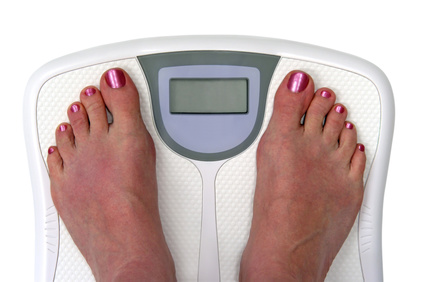Protect Your Brain by Lowering Your BMI

Losing a few pounds may help you stay sharp, according to a recent U.S. study published in the journal Neurology.
The University of Miami Miller School of Medicine study looked at just under 1,300 adults, checking weight, BMI (body mass index), inflammation, and dementia.
The lead study author found that having a higher BMI and waist circumference was associated with having a thinner cortex, which has been known to result in worse cognition later in life. BMI is a useful measure of calculating obesity levels. Using your height and weight, your BMI is an estimate of body fat and a good gauge of your risk for diseases that tend to occur with more body fat.
In general, the higher your BMI, the higher your risk for certain diseases such as heart disease, high blood pressure, type 2 diabetes, gallstones, breathing problems, and certain cancers. We can now add the tendency toward dementia to that list.
Researchers suspect that chronic inflammation caused by obesity may play a role in brain cortex thinning. If so, this discovery provides yet another reason to maintain a healthy weight.
“Dementia is a growing problem in the U.S. and European countries, and as of yet, there are no curative therapies,” says Leanne O’Neil, owner of INDY Neurofeedback. “So focusing on risk factors that can be modified, such as being overweight, is a proactive way to help.”
At INDY Neurofeedback, we help our clients achieve and maintain good brain health. Eating right, exercising daily, getting proper sleep, and sustaining a healthy weight are things you can start now to help your brain health for years to come.

 Thanks to behavioral science and the fMRI, we now know that dogs are able to understand the actual words their owners use — not just voice intonation, as previously thought.
Thanks to behavioral science and the fMRI, we now know that dogs are able to understand the actual words their owners use — not just voice intonation, as previously thought. It is vital that parents work to ascertain what actually is going on with their child. That takes time and that also takes good diagnostic testing of the brain.
It is vital that parents work to ascertain what actually is going on with their child. That takes time and that also takes good diagnostic testing of the brain. It’s fairly well known that research studies are finding that regular exercise absolutely benefits the brain, especially as we age. What we are still trying to determine is precisely how exercise helps counter the cognitive decline that comes with aging.
It’s fairly well known that research studies are finding that regular exercise absolutely benefits the brain, especially as we age. What we are still trying to determine is precisely how exercise helps counter the cognitive decline that comes with aging.
 Everyone knows that a healthy diet and plenty of exercise are the keys to good health and staving off early signs of aging. But did you know that those same health benefits can keep your brain healthy and youthful as well?
Everyone knows that a healthy diet and plenty of exercise are the keys to good health and staving off early signs of aging. But did you know that those same health benefits can keep your brain healthy and youthful as well?